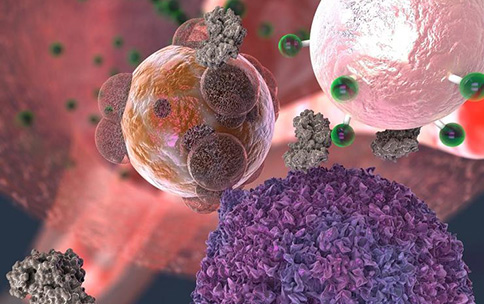
Successful organ transplants are important to the quality of life of patients with end-stage organ failure. Early detection of acute transplant rejection can increase a patient’s chances for survival, by allowing clinicians to intervene and use anti-rejection drugs to save the graft or organ. Unfortunately, current detection approaches, including tissue biopsies, can involve additional surgery, result in sampling errors, or can lead to additional health issues and disease.
The early stages of organ or graft rejection (when the host’s immune cells attack the new transplant) is linked to increases in some biomolecules. One that has been correlated with this stage is Granzyme B, which acts a signal for cell death. New Innovator Awardee Dr. Gabriel Kwong has developed a groundbreaking nanosensor that detects the early transplant rejection marker, Granzyme B, and activates a fluorescent indicator that is passed in the patient’s urine—no additional surgery required.
Dr. Kwong and his team injected the nanosensor into rodent skin graft models and found the sensors could successfully detect early graft failure. Although rigorous testing is needed before it is ready for use in humans, future developments of this technology could allow for better, and less invasive, detection of transplantation failures to give doctors a versatile tool to manage patient health.
Reference
- Non-invasive early detection of acute transplant rejection via nanosensors of granzyme B activity (note: full text may require institutional access). Mac, Q. D., Matthews, D. V., Kahla, J. A., Stoffers, C. M., Delmas, O. M., Holt, A.H., Adams, B. A., & Kwong, G. A. Nature biomedical engineering (2019). https://doi.org/10.1038/s41551-019-0358-7
In the News
- Urine Test Detects Organ Transplant Rejection, Could Replace Needle Biopsies (link is external)
Georgia Institute of Technology



